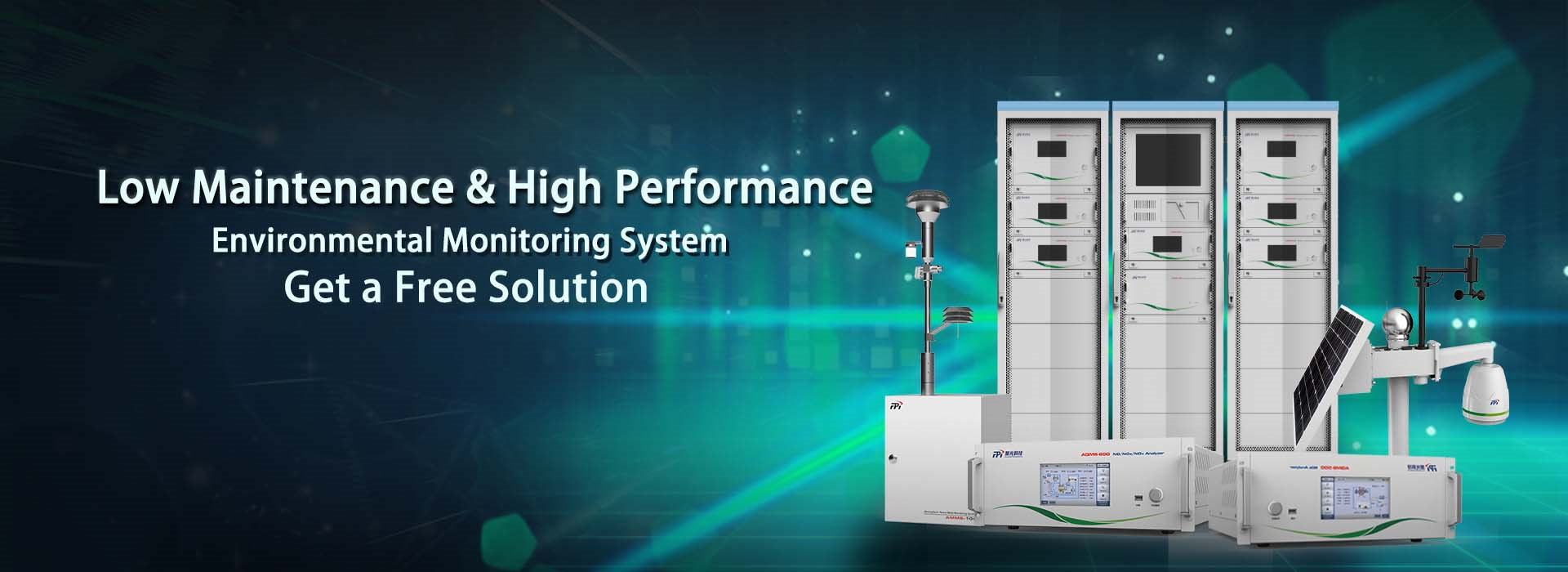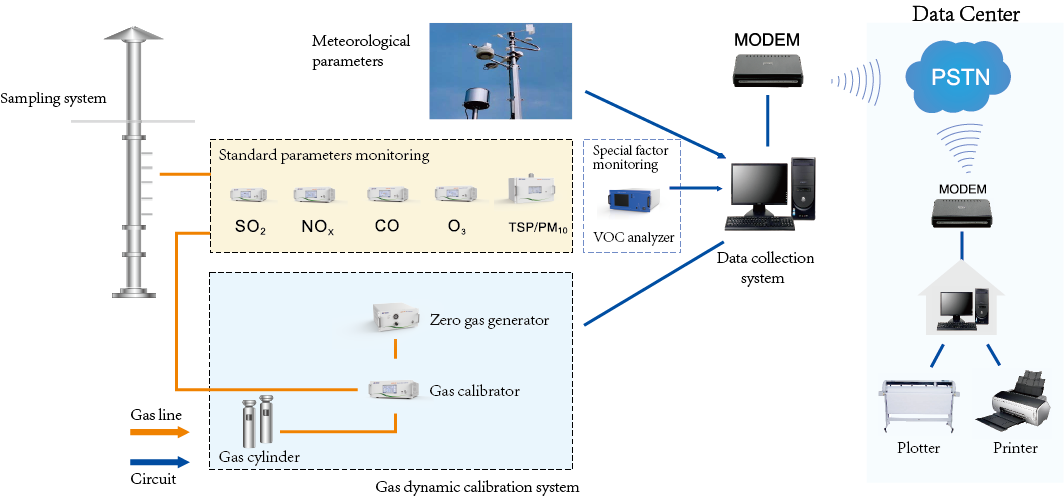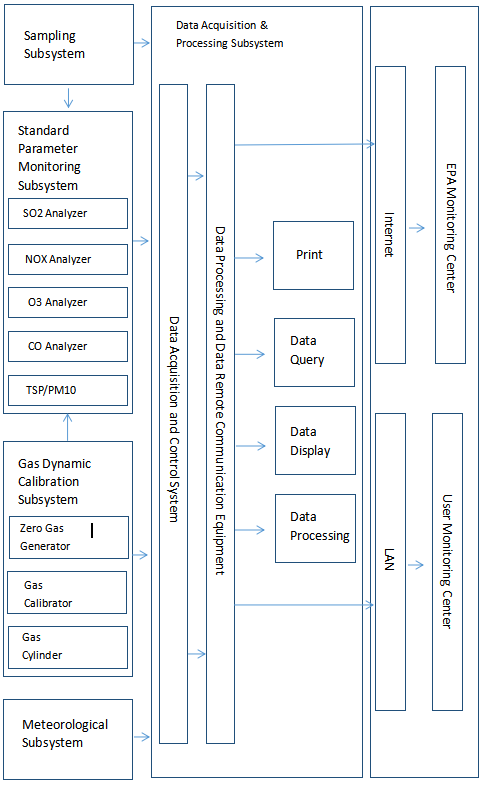
The air quality index or AQI is developed by US EPA to make information available about air pollutants and how to avoid their effects. These monitored components include particulate matter (PM2.5 and PM10), Ozone (O3), Nitrogen Dioxide (NO2), Sulfur Dioxide (SO2), and Carbon Monoxide (CO) emissions, which are the most common air pollutants with proven ill effects on human health.
To meet these requirements, FPI launched their ambient air quality monitoring system, which adopts US EPA certification and Chinese national standard test method for real-time online monitoring, data acquiring and collecting, data transmitting, and analyzing to evaluate the local environmental air quality level objectively and precisely. The monitoring components include all the above pollutant elements. In addition, CO2, NOy, H2S, NH3 monitoring modules can be integrated into the complete system.
FPI’s ambient air monitoring system consists of a sampling subsystem, a gas dynamic calibration subsystem, a meteorological parameters monitoring subsystem, a standard parameters monitoring subsystem, and a data acquisition and processing subsystem.

Standard Parameter Monitoring Subsystem:

